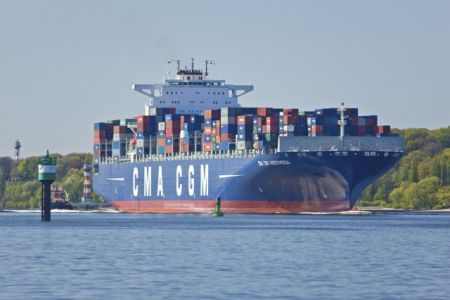
With crude oil down to its lowest price in five years last week, all carriers stand to gain from lower fuel costs, but the competitive and over-supplied nature of the market means that the principal beneficiary will be shippers, according to Drewry Shipping Consultants.
If bunker fuel prices were to remain constant at their current prices throughout 2015, the potential fuel savings for carriers are considerable. For the purpose of the analysis, Drewry has limited the scope to the Asia-North Europe trade.
Assuming the above mentioned bunker costs represent the 2015 average and a round voyage of 77 days, the estimated annual saving for a single 18,000 teu vessel versus the forecast average for 2014 would be USD 5.7 million. For a single 12,000 teu ship – the average size currently used in the trade – the estimated saving is USD 4.75m. Therefore, the total annual fuel saving for a single service using 11 ships of 18,000 teu would come in at around USD 68.8m. These calculations do not take into account the introduction of new IMO sulphur limits from the start of next year.
Using the same assumptions and based on 100% ship utilisation, lower fuel bills will actually narrow the cost advantage of the biggest containerships. For example, the bunker cost per round-voyage slot for an 18,000 teu ship in 2015 will come down by USD 67 to USD 123 per teu, whereas for a 12,000 teu ship the reduction will be USD 83 to USD 153/teu, a differential of USD 30 rather than USD 46 in 2014.
Those with a more pronounced big-ship fleet profile stand to see a lower fuel cost reduction in percentage terms on account of their existing higher per slot fuel efficiency, but they will still be able to squeeze out more absolute fuel cost savings.
One likely side benefit from prolonged lower energy prices is the stimulus it will give to consumer and corporate spending (outside of oil-dependent economies/sectors). Higher demand should translate into better ship utilisation, as long as carriers do not speed ships and increase the effective slot capacity. This in turn will improve the average bunker slot costs for carriers.
A downside for carriers from lower bunkers is that it will undermine their attempts to lift freight rates as shippers will expect to see much of those fuel savings passed on. Drewry says that this sentiment played a part in carriers having to backtrack from recent US West Coast port congestion surcharges.
Carriers have shown that they can make money as long as unit costs are cut harder than unit revenues. Those that have previously been giving away free, or at least heavily subsidised, bunker passes will need to take that into account when negotiating contracts, otherwise their base cargo rates will be unnecessarily dragged down by the expectation of a lower fuel element, which might not have existing in the first place.
We use cookies to improve your experience. By continuing to use our site, you accept our Cookies, Privacy Policy,Terms and Conditions. Close X